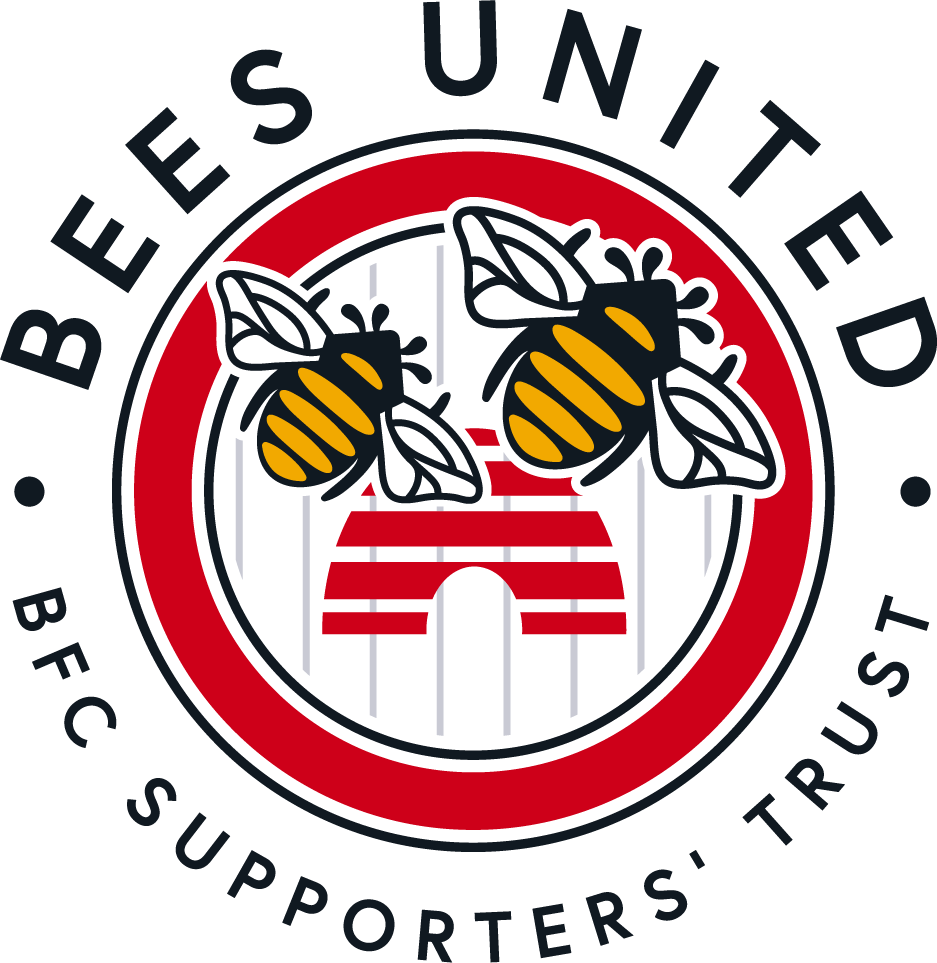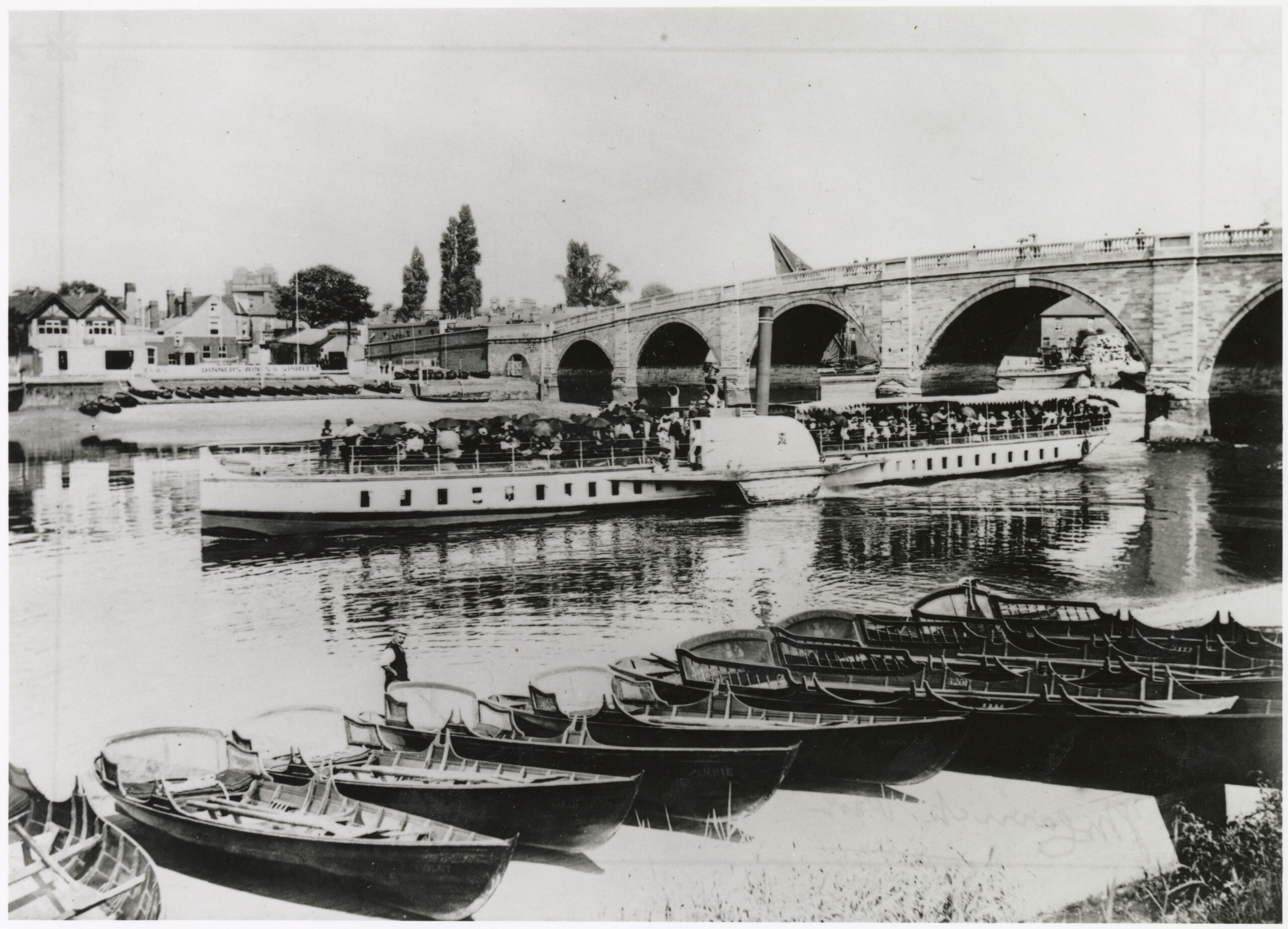The founding place of Brentford Football Club, the Oxford & Cambridge Hotel finally comes out of the shadows.
The Oxford & Cambridge Hotel has long been known as the place where members of the Brentford Rowing Club held those fateful meetings in October 1889 when they decided to form Brentford Football Club.
The Bees, of course, went on to play at Griffin Park for 116 years, a ground named after a mythical creature. Perhaps it should be no great surprise that photos of the place where the club was founded, the Oxford & Cambridge Hotel, have proved equally elusive of those of a griffin.
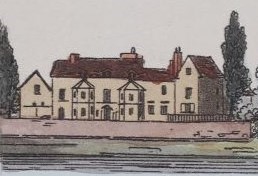
Maps and records show that there had been a pub/hotel on the site since at the early 1800s, when it was known as The Poplars. In this era, it must have been of a substantial size as it advertised itself as an Inn with “good stabling for up to 20 horses, with room for carts”.
It is likely captured in this 1829 drawing of the buildings along the Thames.
In 1868 the name was changed to the Oxford & Cambridge Hotel. Newspaper adverts subsequently appearing highlighted itself as a venue for “Dinners & Teas”, with a “Large Tea Room facing the River”, as well as having boats available for hire. The hotel itself was ideally positioned for people crossing Kew Bridge from Surrey, as it would have been the first pub/hotel they would have reached on the Middlesex side.
In 1873 the tolls to cross the bridge were abolished. It would appear that, as today, road charging was a divisive issue with the local residents of 150 years ago, as on the day that the tolls ceased, a celebratory arch was erected on the north side of the bridge. This was central to a ceremonial event to mark the bridge being free to travel over, and large crowds were drawn to the area. The Lord Mayor of London was guest of honour and opened the gates with a special key for a final time. Thereafter the gates were removed by local fireman and carted away, before later in the evening there was a firework display.
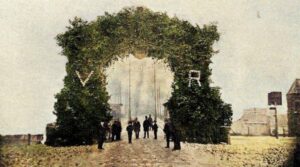
A photograph captured the arch, but it also caught, on its right, a boathouse, a pub sign
……. and the corner of the Oxford & Cambridge Hotel.
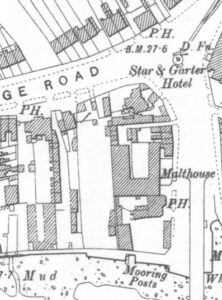 A map from 20 years later shows the Oxford & Cambridge marked as “PH” just below the u-shaped Malthouse, which was owned by Jupp’s.
A map from 20 years later shows the Oxford & Cambridge marked as “PH” just below the u-shaped Malthouse, which was owned by Jupp’s.
The hotel’s boathouse, running parallel to the bridge, is also shown. The “PH” at the top of the map is The Express Tavern.
The bridge was reaching the end of its natural life by the end of the 1800s.
It was replaced by the bridge we know today, with the new structure having fewer arches and much longer approaches than its predecessor, it resulted in the Oxford & Cambridge being slightly less accessible.
It now required a walk down the side of new bridge – similar to when heading towards The One Over The Ait pub today.
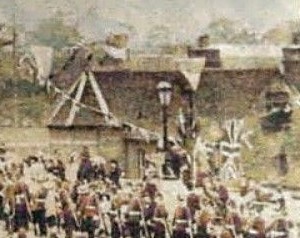
When the new bridge was officially opened by King Edward VII and Queen Alexandra in 1903, it was another day of celebration, and bunting was evident around the Oxford & Cambridge.
Its ground floor was now below the level of the bridge, so only its first floor and roof level were visible in photos.
A 1912 view1 from the Surrey bank showed 4 distinct structures.
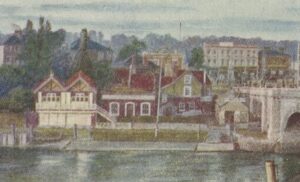
Parallel to the bridge is the Oxford & Cambridge Hotel’s boathouse (sometimes referred to as Wise’s Boathouse, named after the landlord), next to that is the main hotel building, with a secondary building (probably know as the pavilion). The fourth building, with the double pitched roof, was a boathouse latterly used by the Horseferry Rowing Club, for employees of Brentford Gas, Light & Coke Company, and later by British Gas.
The most significant new image2 of the Oxford & Cambridge was very recently located, from zooming in on an aerial picture taken in 1920.
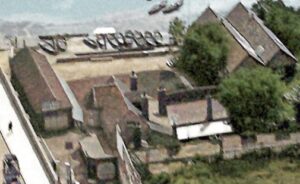 The same 4 structures are visible, but with perspective on their size and the plot of land they occupied.
The same 4 structures are visible, but with perspective on their size and the plot of land they occupied.
The hotel’s “pub sign” appears to be located by the steps down from the bridge. The vacant area of land behind the hotel was where Jupp’s Malthouse once stood. It is clear that the hotel had undergone a number of physical changes over the years.
After World War I, the country was rebuilding, and London was expanding into the suburbs we know today. In 1923 the local licencing authority received a request from The Three Horse Shoes public house in Southall for a licence following its rebuild in the developing local area. It was decided to transfer the licence from the Oxford & Cambridge, for although it was “not a derelict house, but it was not required to the extent that the Three Horse Shoes was.”
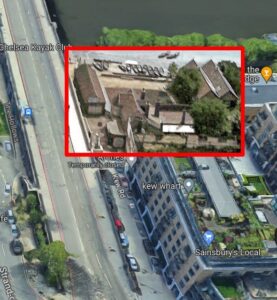
So a century ago the Oxford & Cambridge had pulled its last pint, with its buildings demolished within a couple of years, although the Horseferry boathouse survived until 1992.
Although there have been numerous changes to buildings in the area, the exact footprint of the 4 buildings would still fit in the current space between Kew Bridge and The One over The Ait pub.
Superimposing the 1920 photo on a picture from today, it shows how it could have looked had the Oxford & Cambridge survived.
Given the significant levels of redevelopment in Brentford in the last century, it is amazing that this plot of land has not had a permanent structure on it since. It’s almost as though the land where the Oxford and Cambridge stood is sacred.
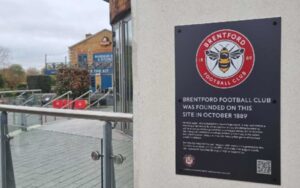
A Bees United plaque was unveiled on the 22 November 2023 by the Mayor of Hounslow (Cllr Afzaal Kiani) Cliff Crown and Stuart Hatcher, Chair of Bees United, commemorating the foundation of the Club in 1889.
Make sure you take a look next time you’re there!
Jonathan Burchill
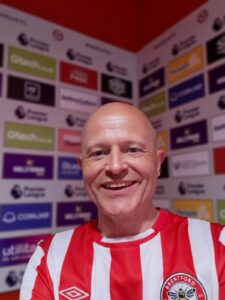
Jonathan is the author of the book, A Pub on Each Corner a unique history of Brentford through season-by-season reviews of the events at Griffin Park. Recounting stories and statistics from both on and off the pitch – from fires to floodlights, from abandoned redevelopment plans to multiple missed penalties – Jonathan writes about our club but also the social history affecting those connected with it for over a century
1 London Borough of Richmond archives
2 Britain from Above
*photographs have been colourized to help define images
